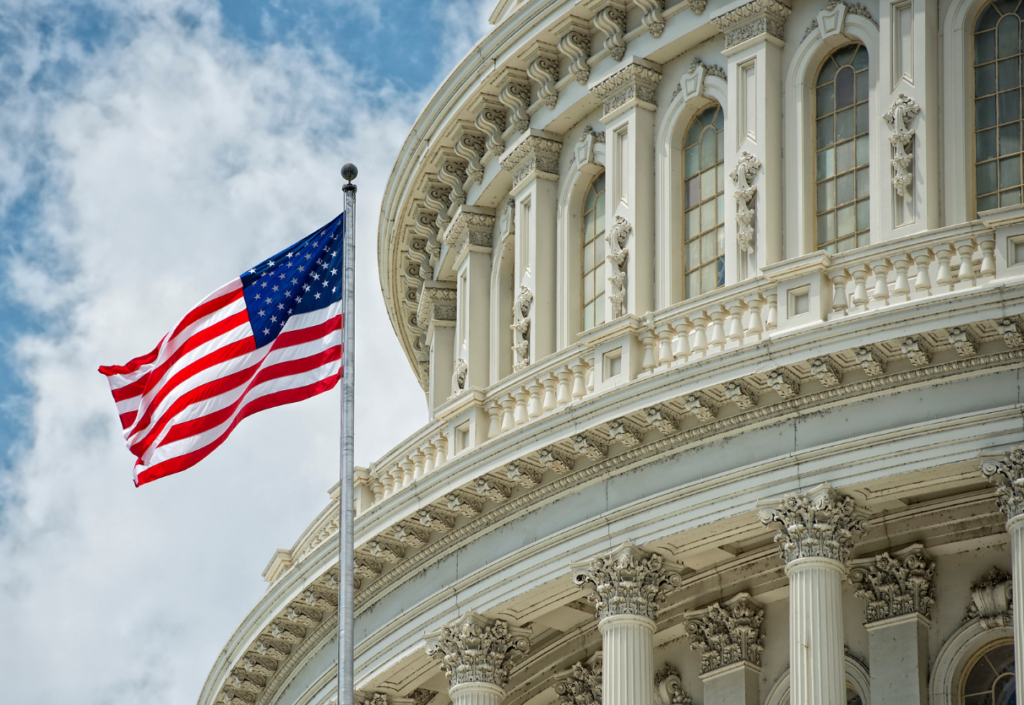
Transmission Policy & Regulation


Smarter Policy for a Greater Grid
It’s not just our grid infrastructure that needs updating: The patchwork collection of rules and policies governing the construction of new transmission is out-of-date and slowing innovation.
With electricity demand rising, our nation needs a cohesive energy policy that aligns regulators and stakeholders at all levels to promote development of desperately needed transmission infrastructure. The benefits include:
- Faster connection to clean energy sources
- Customer-focused, cost-effective investments
- A more capable power grid for our future
Overseeing the Power Grid
The U.S. power grid is governed by many different agencies overseeing federal, state and regional changes to the system. Each one is responsible for a specific piece of a transmission project, influencing its ultimate approval or delay.
Federal
The Federal Energy Regulatory Commission (FERC) regulates all activity related to the interstate transmission of natural gas, oil and electricity and licensing of hydropower projects. The Department of Energy (DOE), Department of Treasury, Internal Revenue Service and other federal agencies play a role in shaping our energy landscape.
Regional
Regional Transmission Organizations (RTOs) and Independent System Operators (ISOs) oversee the regional power system by providing open access to transmission, regional planning, managing generation interconnections and retirements and administering competitive energy markets.
State
Public service and public utility commissions regulate retail electricity rates and determine specific transmission routes through a state-level siting and permitting process.
The Full Scope of Transmission Regulation
In the U.S., the transmission development process is primarily overseen at the federal and regional levels. However, once a transmission line is approved and ready to construct, state and local officials also have a say about specific line routes. This means transmission projects are closely regulated and monitored at every stage of development, at multiple levels of government. That’s good for customers and communities, but also adds complexity and time to the development process.
This is why a cohesive approach at the federal, regional and state level is so important. To ensure we have the system we need, we need to come together around a common vision for a greater grid.
It takes around 8-12 years to plan, build and launch a major new transmission project, and investments in new transmission are billions below the level needed to secure our energy future.
We need transmission policy reform in specific areas, including:
Planning
FERC, RTOs, utilities, states and other stakeholders must align to prioritize long-term planning across and between regions, while also supporting the local transmission infrastructure that makes the regional system work.
Permitting & Siting
Once the planning stage is complete and projects are approved, permitting can be a significant hurdle to completion of projects, particularly if there is litigation. We need to ensure that the permitting process is efficient and that narrow objections don’t delay projects indefinitely.
Cost Allocation
Traditionally, the costs of most transmission projects are assigned to customers in a local area. While this is appropriate for many projects, it also can lead to concentration of costs and excess burden on certain customers for projects that benefit the regional grid. Long-term planning must be combined with cost allocation policies that reflect the benefits transmission provides.
Transmission Rates
When it comes to transmission rates, it’s all about certainty. Regulators should prioritize a stable rate structure, with appropriate incentives, that provides upfront certainty in the development process and ensures a regulated rate of return that is sufficient to attract significant capital needed to build major new projects.
Some of the Most Common Policy & Regulatory Questions
Who is the main regulator of transmission projects?
At the federal level, transmission policy is primarily overseen by the Federal Energy Regulatory Commission (FERC), an independent agency with authority over interstate transmission and wholesale electricity markets. FERC directly sets transmission rates and oversees market rules, which are crucial components of the transmission development story. However, in practice, FERC delegates many aspects of transmission planning and development to RTOs and ISOs at the regional level, and defers to states on transmission siting decisions.
Why is greater regional and interregional collaboration so important?
Increasing electricity demands and the complexity of our modern grid have made regional and interregional planning a necessity. When any component connected to the grid is changed—for example a new power plant comes online or a section suffers damage in a storm—the impacts are felt across the grid. That means adding new wind energy in the Great Plains or solar energy in the Southwest benefits everyone everywhere in between.
Incremental, piecemeal approaches and local line additions to our transmission network are easier to move forward but are ultimately less effective and more expensive than widescale transmission solutions. Grid planners must think holistically and take a macro, long-term perspective on our changing generation mix and electricity demands.
Why is a shared vision for transmission development so important?
Effective and efficient transmission planning requires alignment at all levels of government; without that alignment, it can become exceedingly difficult to push major infrastructure projects through all of the approvals needed for completion.
A recent Brattle Group study found that U.S. transmission investment needs to rise from $15 billion today to as much as $40 billion a year if we are to meet the challenges of greater electrification. Mismatched incentives and a grueling approval process are disincentivizing private sector investment in transmission. That needs to change.
Will transmission investment raise my bill?
Transmission investment unlocks lower-cost generation sources and puts downward pressure on energy rates over time. Not investing in transmission today will ultimately cost consumers more as our power grid falls further and further behind, costing even more to catch up.
Let’s Build a Stronger Grid
It will take all of us—legislators, regulators, utilities and the public—to drive the changes in policy we need to build a power grid for our 21st century economy.
We’re already behind, so let’s get to work.
Learn the Issues
Dig into transmission policy with industry insights.
Share the Message
Share on LinkedIn and X.
